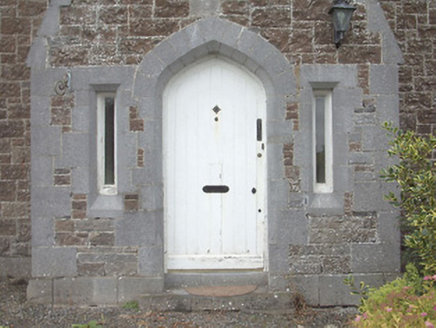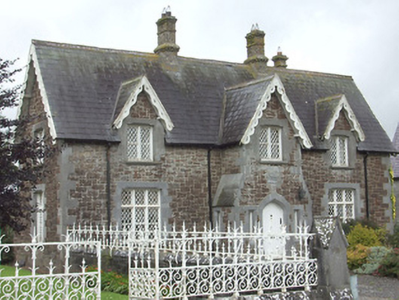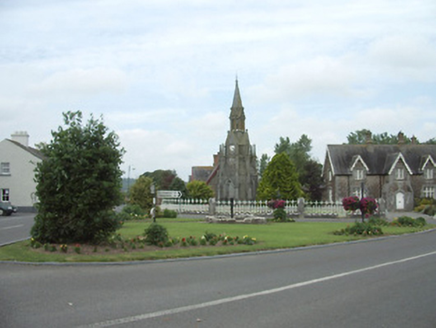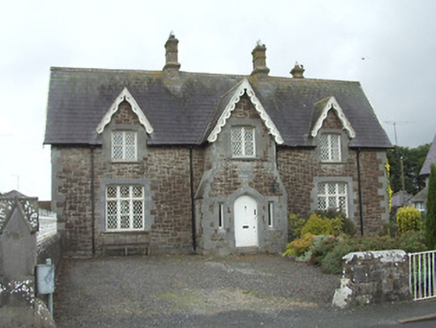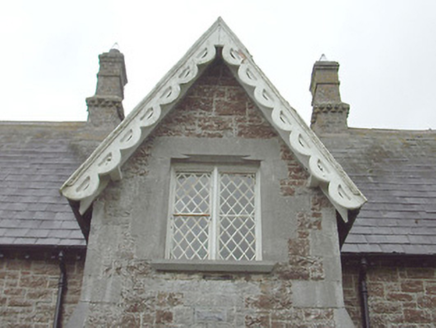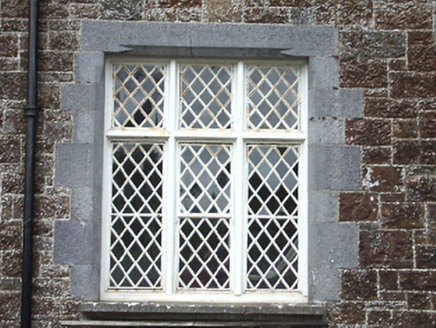Survey Data
Reg No
13312016
Rating
Regional
Categories of Special Interest
Architectural, Artistic, Historical, Social
Previous Name
Ardagh Constabulary Barrack
Original Use
Garda station/constabulary barracks
Historical Use
RIC barracks
In Use As
House
Date
1860 - 1870
Coordinates
220226, 268645
Date Recorded
04/08/2005
Date Updated
--/--/--
Description
Detached three-bay two-storey former Royal Irish Constabulary barracks, built c. 1863, having an advanced gabled central breakfront and with half dormers to attic. Possibly originally used as an estate worker’s house, now in use as private house. Pitched natural slate roofs with decorative red brick chimneystacks, cast-iron rainwater goods, and pierced scalloped timber bargeboards to gables. Snecked rock-faced stone walls over dressed stone plinth with dressed limestone quoins to the corners of main body of building and to breakfront. Square-headed window openings with dressed limestone block-and-start surrounds having carved/chamfered detail to lintels, dressed limestone sills, timber and metal frame windows with quarry glazing. Four centered arch entrance opening, with timber battened door. Square-headed sidelights with dressed limestone surrounds and fixed timber frames flanking entrance, and also to side elevations of advanced bay. Accessed via stone step. Landscaped garden to front, with remains of snecked stone boundary wall, and wrought-iron gate. Located to the centre of Ardagh, adjacent to The Clock Tower (13312017).
Appraisal
This attractive building retains its early scale and form, and is a fine example of its period. It is characteristic of Victorian estate architecture, which is relatively rare in Ireland. This building, perhaps, retains more of its original fabric than the other estate buildings in Ardagh, including pierced bargeboards and quarry glazing to the window openings, although the boundary wall has been partially demolished. It dates from a specific period of rebuilding and restructuring of the village of Ardagh in the early 1860s. It was erected to designs by the architect James Rawson Carroll (1830 – 1911), who carried out various works at Ardagh for Sir Thomas Fetherston (between c. 1860 – 1865) in order to improve the village as a memorial to his uncle, Sir George Fetherston. It is one of a number of houses, of varying designs, in the village of Ardagh that collectively represent one of the most interesting collections of its type in north Leinster. Its location adjacent to The Clock Tower (13312017) affords it a high status within the planned village. Its former use as a Royal Irish Constabulary barracks is interesting for the social history of the village, although it is not clear if it was originally built for this function. A patch of rebuilding over the main entrance formerly had a carved Royal Irish Constabulary insignia, later removed. The partially demolished boundary walls and the wrought-iron gate complete the setting and add to this instantly appealing composition.
